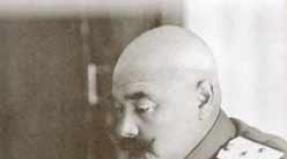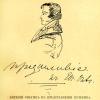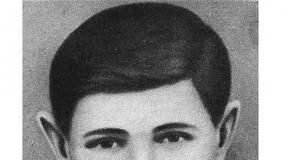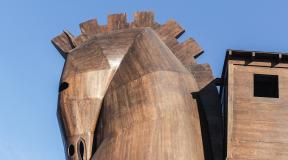Setting the UAZ carburetor to 126 g adjustment. The device of the K126 carburetor, adjustment and repair. Dismantling Camera Cover Float and Disconnection of the throttle
The modern automotive industry equips cars with electronic fuel injection, the nozzle serves as the system upgrading. The carburetor to 126 K, it would seem to live their century, but even now it is possible to meet a car of this type. The carburetor to 126 K is installed on Cars UAZ-452, the nodes and units of which are famous for their reliability, durability. Carburetor engines are distinguished by the lightweight maintenance, the conditions of the meager car service.
General technical description and carburetor device to 126 to
Carburetor units were installed on domestic cars for a long time. The main structure is similar to the systems used in other brands of the car. The carburetor 126 of the model range due to the balanced nodes is stable, effectively loads the fuel in the engine combustion chambers. The general device is a two-chamber unit with the opening sequence system.

K-126 carburetor Scheme and device: 1.Mixing chamber. 2. Screw the quality of the mixture. 3. Hole of the vacuum regulator. 4. The throttle drive lever. 5. Screw of the amount of the mixture. 6. Large diffuser. 7. Small diffuser. 8. Axle air damper. 9. Air damper spring. 10. Cover of the float chamber. 11. Air damper. 12. Sprayer of the accelerator pump. 13. Fuel journey of idling. 14. Float Camera Case. 15. Viewing window. 16. Throttle. 17. Screw fastening of the case. 18. Screw fastening of the lid. 19. Economizer Sprayer. 20. Acperceration pump drive. 21. The main air jaw. 22. Filter cork. 23. Emulsion tube. 24. The piston of the accelerator pump. 25. Kulis drive. 26. The axis of the secondary throttle. 27. Guide sleeve. 28. Main fuel jackler.
Description of the camera's work is based on the engine loading, with stable operation modes, the fuel is delivered through the first chamber, the maximum loads require the opening of the secondary chamber. The location of the dosing nodes of the carburetor to 126 in the lid and the unit of the unit, performs fuel delivery functions to the combustion chamber. Material for the manufacture of carburetors is usually used from aluminum alloys, it is less susceptible to corrosive processes, it has a resistance to elevated temperatures.
Float camera
The chamber body consists of component elements for the carburetor. Diffusers are used to supply the finished mixture directly into the cylinders, the accelerator pump drive and the needle is responsible for the supply of fuel when the engine is fully loaded. The mechanisms of idle, the economizer is responsible for stable operation on the XX, when accelerating the car.

Float camera carburetor: 1. Fuel filter 2. Fuel valve 3. Float.
The device and repair of the carburetor to 126 consists in such a way that there is a simple replacement of jags without a complete removal of the unit from the engine. The jib for idling is located on the outside by 126 of the carburetor. The air damper is located in the lid of the unit, close proximity to the automatic valves. The damper is connected to the throttle gas drive, for the operation of the cold engine start.
The float system works at the expense of the mechanism fixed on the lid of the carburetor by 126g. The system is responsible for controlling the amount of fuel to the carburetor for uniform engine operation with all types of loading. The float is made of thin-leaf brass steel, needle valve.
Operating principle
The main housing of the K126N system consists of two chambers for mixing the fuel. An idle adjustment is made by screws outside the housing for a faster, convenient setting. Transition holes are located paired with adjustment systems, serve for clear operation of the dosing system.
Parameters of the dosing elements of carburetors
| Parameters | Modifications of carburetors | ||||
| K126D | K12611 | K126E. | K126B. | K135 | |
| Diameter of large diffuser, mm | 21 | 23 | 27 | 27 | 27 |
| Diameter of mixing chambers, mm | 34 | 34 | 34 | 34 | 34 |
| Main fuel jets, cm³ / min. | 160 | 180 | 255 | 330 | 310 |
| Main air jets, mm, cm³ / min. | 280 | 180 | 143 | by | 125 |
| Fuel jets of idle, mm, cm³ / min. | 50 | 00,6 | 75 | by | 90 |
| Air jackets of idle, mm, cm³ / min. | 300 | 470 | 315 | 420 | 600 |
| Economizer Sprayer, mm | 00,7 | 00,75 | 00,75 | 00,7 | 00,75 |
| Accelerator pump sprayer, mm | 00,6 | 00,6 | 00,6 | 00,6 | 00,6 |
| Membrane Camera Jetgers: Air, cm³ / min. Vacuum cm³ / min. | 45 310 | 60 250 | |||
| Performance of the accelerator pump for K) full moves, cm³ | >12 | ||||
The device works at the expense of air braking. All K126GM nodes that are responsible for stable launch, work with any downloads are located in the first mixing chamber. The economizer and its needle are located in the air nozzle of the second chamber, equipped with a sprayer for greater effect.
Features of the accelerator pump and idle systems
The accelerator pump serves to supply fuel into the engine when the car is fully loaded. At the moment of complete pressing on the accelerator pedal, a special system consisting of a piston in the cylinder begins to pump fuel, transmits to the combustion chamber. The drive mechanism of the economizer is also responsible for the supply of fuel, but it works relative to another scheme.

The system of idling is equipped with all cars of this kind, including the carburetors of the series to 126 GU, installed on UAZ - loaf and gas. It allows you to keep smooth revisions with the lack of load, save fuel. The adjusting screw is responsible for the quality of the mixture for any downloads, the adjustment of the carburetor to 126 K is made with extreme caution.
Maintenance carburetor
During operation, the carburetor to 126 like any node vehicle requires maintenance. The device must be clean, dust or dirt particles can disrupt the operation of the K126 carburetor device, you will need adjustment at the most inappropriate moment. Flushing of the device parts is carried out as contamination, prevention facilities.
Cleaning and flushing the unit is performed according to the service scheduled service regulatory. The carburetor to 126 K must be checked at the first signs of its malfunction, increased fuel consumption, reduction of returns when loading, jerking the engine at idle.
For full cleaning, a carburetor dismantling is required 126 g, it is required to remove the air filter housing, disconnect the fuel supply hoses, the drive cable, the vacuum accelerator hose of the ignition system. After dismantling, the cold engine fuel supply unit is disassembered, the cover of the float chamber.
Cleaning the case, systems are produced chemicalsdistributed in auto shops or combustible mixture. It is forbidden to produce work with metal objects, since there is a chance to damage fuel channels or expand the holes.
During the process, you should pay attention to several parameters:
- The reconciliation of fatters is performed by dismantling, measuring in advance made metal rod of the desired diameter;
- Checking the adjustment of dampers to the case, with a full force on the craving between the walls there should be no gaps;
- Fuel level in the float chamber. Moving the float must be unhindered. Sealed float is checked in a water bath, after repairing weight should be from 12 to 15 grams.
It should be understood that the clogging of the K126N system occurs due to the use of poor-quality fuels or filter elements. Therefore, after the cleaning procedure, it is necessary to replace all Fuel filter, the K126GM air system, adjust the valve to its own and hand.
Signs of malfunction of the unit may be a set of reasons or poor-quality maintenance. Before repairing, adjusting the K126 carburetor, the ignition system, candles, armor-piercing wires are checked. Causes of bad operation of fuel loading can be caused by disruption of adjustments of mechanisms with an illiterate specialist, worn seals, clogging channels or air gibber.

The main symptoms of fault are shown below:
- The engine does not start, shifting the fuel due to high level Float Camera (level not adjusted).
- The motor starts not the first time, protraits and stalls. The carburetor K 126 has a filter that is clogged, the quality of the mixture is not allowed and is not adjusted.
- Depleted mixture or low level Gasoline in the float chamber are the causes of the passes, failures during the operation of the motor cylinders.
- Floating turns and dips at idle make it felt about the clogged buster of the XX, or a depleted mixture.
- The reduction in capacity when loading testifies to the scoring fuel jicker, depleted mixture.
- Increased fuel consumption is usually caused by improper adjustment of the loading of the fuel supply unit of the power unit.
Of course, it is impossible to talk with confidence about the violation of the work of the K126 carburetor, installed on the UAZ, the device of which fails under the signs given. It is important to configure and check the motor, the entire fuel line, is refined with your own ignition hands. Prevention, verification of the condition and adjustment of the carburetor and K126G nodes on the UAZ will never be excess procedure.
Proper setting of all carburetor systems to 126 to
Before you set up a needle with your own hands, you need to check the tightness of the connections and connect all underwater hoses. The required fuel level in the float chamber is set at the expense of the float level. The car standing on a flat surface warms up to the operating temperature, after that it is shuffling and the level is checked, from should be from 17.5 to 21 mm.
Tuning applied and configuring cold start nodes occurs without a unnecessary tool, it is enough to connect the flap levers, drive with the correct sequence. Checking is made by pulling the supply handle from the cabin to the maximum level, if in this case the air damper completely overlaps the camera, and in the weakened position opens, then the K126N system works properly. The carburetor to 126 K requires to set the number of nozzard turns according to the scheme.
At engine operating temperature, it is necessary to adjust the number of speed at idle, which should be 500 per minute, deviations are allowed into the large side during operation during the winter period.
Adjusting the carburetor to 126 and idling parameters is as follows:
- The adjusting screw of the quality setting of the mixture is twisted until it stops, and then unscrewing at 2.5 turns;
- The engine warms up to operating temperature, adjusts the rotation angle of the throttle opening;
- Checking the results of the adjustment occurs with a sharp press on the gas pedal, the engine should not stumble, a smooth drop of revolutions occurs.
Adjustment does not represent special difficulties and does not require the cost of the tool and special means. It is for this reason that the automotive plant produces carburetor K126GM cars that are used in difficult conditions remote from the service service. Compliance with the frequency will give the opportunity to operate the car for a long time without critical breakdowns.
The "golden age" of carburetor motors has long passed. Today, all car systems are controlled by electronics. Nevertheless, people who appreciate their "combat horses" UAZ with a carburetor for simplicity and reliability. If you are one of them - this article is for you. We will tell, as the K-126 on the UAZ.
Motorists appreciate UAZ with the K-126 carburetor for simplicity and reliability
Device and specifications K-126GU
Two-chamber K-126 carburetor with a falling fuel mixture flow is a basic model for. To properly configure, you need to have an idea of \u200b\u200bthe device, parameters and principles of the unit.
Main elements:
- two working chambers for mixing fuel with metering systems;
- economizer;
- accelerating pump;
- hope Stroke Device.

The unit allows you to work smoothly in all possible modes. It is worth noting that the K-126 is distinguished by a simple and reliable design. With competent configuration, it provides 100 km:
- for urban conditions 13 l;
- on the highway 11 l.
Installation
First, dismantle the air filter. Next, alternately remove:
- dammes of dampers;
- hoses (fuel and selection of vacuum corrector vacuum).

The unit is mounted on the flange of the inlet pipeline of the motor. Four nuts. Additionally used spring washers. We check the integrity of the rubber gasket, if necessary - change it. At the final stage, we attach the drives of dampers and nozzles.
Setting order:
- we check the tightness of the unit (special attention to the plots of fastening of hoses, traffic jams and gaskets). If we find leakage of fluid - we eliminate the problem;
- we download fuel (6-8 times with manual fuel pump);
- we close the air damper, launch and warm up the engine;
- as the motor heats up, we gradually open the damper;
- at the time when the antifreeze temperature reaches the +40 ° C mark, fully open the damper;
- up to the stop, screw the screw regulating the quality of the fuel mixture;
- we unscrew the "quality" screw for 5 revolutions;
- bring the temperature of the liquid to 90 ° C;
- increase the crankshaft turnover to the maximum possible amount;
- smoothly twist the screw adjusting the amount of fuel mixture until interruptions in the motor operation begin;
- turn off the "quantity" screw for half turn;
- check engine performance. Click on the gas pedal, and then let it go sharply. If the motor stalls - raise the speed.
Output
Despite its "revered age", the K-126 carburetor continues to exploit. Causes are simplicity, reliability, unpretentiousness in service. The minimum effort on, and the unit will work smoothly for years.
Maybe you know any special methods for setting the K-126 carburetor? Share your experience in the comments. Transfer your skills to young motorists.
For most Owners "Volga", Gazelle and Uzaz, the domestic industry left not so much space to select a more or less successful carburetor model. Modern gasoline motor up to 3000 cubes The manufacturer simply completes the carburetors of the K-151 series. The position is simple, who do not like - can use outdated K-126. With proper adjustment, the K-126 carburetor can be successfully replaced with a more trumped 151 series.
Warranty of normal carburetor
Before making the solution to replace the K-151 carburetor to K-126g or K126, look at K-151c. In many cases, the reputation of the carburetor K-151C, its repair and adjustment, is practically no different from the other models of this series, and the quality of work is ensured by a number of improvements:
- diffusers have an improved camera channel profile;
- the optimized cam profile of the fist of the accelerator pump allows you to fully feed the fuel into two cameras in the required volume;
- the damper drive rotates steadlessly, gives accurate positioning, which facilitates the cold start of the motor;
- the ranges of adjustment of dosing screws changed, which significantly raises the dynamics of the motor while maintaining the gas toxicity norms.
The manufacturer declares the theoretical improvement of the dynamics at least 5-7% in the case of installation K-151C.
Important! One of the reasons for the abnormal operation of the K-151D carburetor, requiring adjustment and repair, is a large amount of frank marriage in new carburetors sold in retail chains.

For normal operation, the K-151 carburetor requires repair and adjustment, otherwise the carburetor demonstrates the instability of characteristics and increased fuel consumption. To achieve more or less stable operation, you need to check the adjustment of the main settings:
- Check the serviceability of EPHX K-151 and all components of the system. Often the main cause of poor work system of the compulsory stroke can be the incorrect factory assembly of the mutual location of the valve spring and membrane.
- Adjust the idle course with the diagnosis or repair of individual components.
- Check and adjust the accelerator pump action.
- Poor quality of gasoline leads to the accumulation of dirt in the float chamber. For repair and adjustment, it is necessary to pre-blow the main air and fuel channels, sometimes check the condition of the jaws.
Differences in the approach to K-126 and K-151
The basic principles of repair and adjustment are practically no different for both Lines of K-151 and K-126 carburetors, with the exception of the specifics of the operation of the pneumoclipan and the electronic unit K-151. More problems It occurs with the illiterate replacement of some carb nodes of other model parts.
Often, after replacing the K-151 carburetor, a simpler model K-126, a number of problems arise. First of all, the poor quality of the lower block of the carburetor leads to the formation of cracks, air seats and a sharp reboot of the mixture. To prevent the breakdown, it is necessary to thoroughly align the prigning plane on the sandpaper pasted on the glass.
In some cases, the adjustment and repair of the K-126 carburetor at all does not make sense due to significant wear in the pairing places of mechanical parts, for example, in the support holes of the valve axis or rods, the threads of the adjusting screws. In such places, leaping and evaporation of gasoline with simultaneous air sawmill may occur. They are easy to learn from the icing of the K-126 carburetor formed.
K-151 carburetor adjustment
The adjustment procedure does not represent a special difficulty, but in the absence of experience, it is better to study the adjustment of the K-151 carburetor on the video:
The old Soviet School of Carburetor Construction School provides repair and adjustment to K-151 or K-151E using a simple or crosshead screwdriver.

Control of the level of unbalancement of the Float Camera K-151
For normal operation, a properly functioning valve is required, providing air pressure compensation in the float chamber. If there are problems with the work of the balancing valve, the fuel consumption jumps sharply, and it is useless to regulate it. At the same time, the drive click does not indicate the pressure balancing, it is better to check the replacement to a deliberate version before repairing. For further adjustments, K-151 should be pre-clarified and adjust the fuel level in the float chamber.

Install idle K-151
The simple procedure for installing idle revolutions is carried out in the following order:
- we warm up the motor to the operating temperature;
- screwdriver withdraw the position of idle speed 550-650 (for three-liter 700-750). Big screw is easy to see on the back of the carburetor;
- the screw of the installation of the composition of the fuel and air mixture is displayed - turn the maximum rotation of the motor;
- we raise the screw adjustment adjustment with the HX speed per hundred more than necessary;
- the quality screw of the mixture is set by the necessary speed of idling K-151.
Check the result. At 1400-1500 revolutions, they press sharply and close the throttle. Normally, if the revolutions did not fall below the exposed idle. It should not be twisted in the engine. On the go, under the podagazovka and acceleration, there should be no failures in the engines.

Important! The procedures performed make sense only in the case of a fully serviceable and adjusted motor.
We will work with a throttle position screw
In the design of the carburetor for adjusting and repairing, a thrust screw is used, which limits the extreme position of the flap. The thing is very useful, but there is a nuance. The screw tends to self-indulgence, thereby leaves the damper in the limness. The damper begins to rub the chamber wall and after a certain period of time, it fits in the extreme position.
To prevent such a situation after adjusting the screw, it should be corrected using paint droplets.
If you have good fixer repair skills, the desire to "sharpen" and adjust the K-151 carburetor under its car, choose to-151c. Otherwise, the old, reliable K-126, or for machines with off-road properties with the PU index, is suitable.
The engine is installed on the engine K-126g - emulsion, two-chamber, with a falling stream, with a sequential opening of throttle valves and a balanced float chamber.
The carburetor has two mixing chambers: primary and secondary. The primary camera works on all engine modes. The secondary chamber is included in the work with a high load (approximately after 2/3 of the throttle valve of the primary chamber).
To ensure uninterrupted operation of the engine in all modes, the carburetor has the following dosing devices: the system of idling the primary chamber, the transition system of the secondary chamber, the main dosing systems of the primary and secondary chambers, the economizer system, the cool engine start system and the accelerator pump system. All elements of dosing systems are located in the housing of the float chamber, its lid and the mixing chamber housing. The housing and cover of the float chamber are cast from zinc alloy CAM-4-1. The housing of mixing chambers is cast from aluminum alloy AL-9. Sealing cardboard pads are installed between the housing of the float chamber, its lid and the housing of the mixing chambers.
Fig. 1. K-126 carburetor (section 1):
1. Mixing chamber; 2. Screw of the quality of the mixture; 3. Hole of the vacuum regulator; 4. throttle drive lever; 5. Screw of the amount of the mixture; 6. Large diffuser; 7. Small diffuser; 8. Axis of air damper; 9. Spring of air damper; 10. Cover of the float chamber; 11. Air damper; 12. The sprayer of the accelerator pump; 13. Outdoor fuel jaw; 14. Float Camera Case; 15. Viewing window; 16. Throttle.

Fig. 2. K-126 carburetor (section 2):
17. Screw fastening of the case; 18. Screw fastening of the lid; 19. Economizer sprayer; 20. Acpercelative pump drive; 21. Main air jaw; 22. Filter cork; 23. Emulsion tube; 24. Piston of the accelerator pump; 25. Kulis drive; 26. The axis of the secondary throttle.

Fig. 3. Carburetor K-126g (cross section 3 and 4):
27. Guide sleeve; 28. Main fuel journey; 29. Float; 30. Fuel valve; 31. Fuel filter.
In the housing of the float chamber are located:
Two big 6 and two small diffuser 7 ;
Two main fuel gibber 28 ;
Two air brake gibera 21 major dosing systems;
Two emulsion tubes 23 located in the wells;
Fuel 13 and air jets of the idle system;
Economizer and guide bushing 27 ;
Acpercerative pump 24 With injection and check valves.
The main dosing system sprayers are derived in small diffusers of primary and secondary chambers. Diffusers are pressed into the housing of the float chamber. In the housing of the float chamber there is a window 15 To monitor the level of fuel and the operation of the float mechanism.
All zibrel channels are equipped with traffic jams to provide access to them without disassembling the carburetor. Fuel jackler idling can be turned out outside, for which its body is removed through the cover upwards.
In the cover of the float chamber there is an air damper 11 with semi-automatic drive. The air damper drive is connected to the axis of the throttle valve of the primary chamber of the levers and thrust system, which, when starting a cold engine, open the throttle to the angle required to maintain the engine speed. The secondary throttle valve is tightly closed.
This system consists of an air damper lever, which acts on one shoulder on the lever axis axis of the air damper, and the other craving on the small gas lever, which, turning, presses the primary chamber to the valve and opens it.
In the cover of the carburetor, the float mechanism is attached, which consists of a float suspended on the axis, and the valve 30 Fuel supply. The float of the carburetor is made of 0.2 mm thick brass. Fuel supply valve - collapsible, consists of a housing and a shut-off needle. The diameter of the valve seat is 2.2 mm. The needle cone has a special sealing washer made from the composition based on fluorine rubber.
Fuel entered into the float chamber passes through a strainer 31 .
 Two throttle valves are located in the mixing chamber housing 16
Primary chamber and secondary chamber, adjusting screw 2
idling systems, toxicity screw, idle system channels, idle system transition opening, serving to ensure the coordinated operation of the idling system and the main dosing system of the primary chamber, hole 3
Purgeration supply to the vacuum ignition protrusion, as well as the transition system of the secondary chamber.
Two throttle valves are located in the mixing chamber housing 16
Primary chamber and secondary chamber, adjusting screw 2
idling systems, toxicity screw, idle system channels, idle system transition opening, serving to ensure the coordinated operation of the idling system and the main dosing system of the primary chamber, hole 3
Purgeration supply to the vacuum ignition protrusion, as well as the transition system of the secondary chamber.
The main systems of the carburetor work on the principle of pneumatic (air) braking of fuel. The economizer system works without braking as an elementary carburetor. Systems of idle, accelerator pump and a cold engine start are available only in the primary carburetor chamber. Economizer system has a separate sprayer 19 Removed in the air nozzle of the secondary chamber. The secondary chamber is equipped with a transitional idling system.
Fig. 4. Carburetor K-126g (cross section 5).
The idling system of the carburetor consists of fuel gibber 13 , air gibber and two holes in the primary mixing chamber (upper and lower). The bottom hole is equipped with screw 2 To regulate the composition combustible mixture. Outdoor fuel jawer is located below the fuel level and is included after the main gibber of the primary chamber. Emulsification of fuel is made by air jet. The required characteristic of the system is achieved by a fuel jackler of idling, air brake joclars, as well as the magnitude and location of the transition holes in the primary mixing chamber.
The main dosing system of each chamber consists of large and small diffusers, emulsion tubes, the main fuel and main air jets. Main Air Jiller 21 regulates air intake inside emulsion tube 23 located in the emulsion well. The emulsion tube has special holes intended for obtaining the necessary characteristics of the system.
The idling system and the main dosing system of the primary chamber provide the desired fuel consumption at all major engine operation modes.
The economizer system consists of a guide sleeve 27 , valve and sprayer 19 . The economizer system is included in the work in 5-7 ° to the full opening of the throttle of the secondary chamber.
It should be noted that on the full load mode, except the economizer system, the main dosing systems of both cameras and very few fuel continues to flow through the idle system.
The accelerator pump system consists of a piston 24 , drive mechanism 20 inlet and injection (graduation) valves and sprayers 12 derived in the air nozzle of the primary chamber. The system has a drive from the axis of the primary camera choke and works when overclocking the car.
On the axis of the throttle valve of the primary chamber rigidly fixed the lever 4 Drive. Also rigidly on the axis reinforced leash 25 . Kulisa freely installed on the axis of the flap 16 And has two grooves. In the first of them moved a leash, and in the second - a finger with a roller of the lever fortified on it 26 Axis drive 8 Secondary damper.
The flaps are held in a closed position with springs reinforced on the axis of the primary chamber and the axis of the secondary chamber. Kulisa 25 Also, constantly seeks to close the valve of the secondary chamber, as the return spring is acting on it, reinforced on the primary chamber axis.
When driving lever 4 Drive the axis of the primary camera leash lever of the primary chamber first moves freely in the scene 25 (Thus, only the valve of the primary chamber opens) and approximately after 2/3 of its move of the leash begins to turn it. Kulisa 25 The secondary damper actuator opens the secondary throttle. When the gas is discharged, the spring returns the entire lever system to its original position.
Carburetor care
Care of the carburetor includes:
1. Outdoor inspection in order to remove dirt and detect traces of fuel leaking.
2. Periodic cleaning and flushing of the carburetor.
3. Check the fuel level in the carburetor float chamber and, if necessary, its adjustment (simultaneously check the tightness of the fuel valve).
4. Check the bandwidth of the jets.
5. Check the density of connections between the hollows of the carburetor, the serviceability of the gaskets, the density of the plugs.
6. Checking the gap between the air and throttle valves and their enclosures.
7. Check the correctness of the operation of the opening mechanism of the secondary throttle and the lack of hotels in the joint work of primary and secondary throttle valves.
8. Check the operation of the accelerator pump.
9. Check and, if necessary, adjust the angle opening angle of the throttle valve with a completely closed air damper.
10. Adjusting the small speed of the engine idling.
Periodic cleaning and flushing of the carburetor are produced during seasonal maintenance, as well as in cases of increased gasoline consumption, a sharp reduction in power in transient modes and unstable operation at small idle turns.
Cleaning is subjected to float and mixing chambers, the cover of the float chamber, diffusers, air, fuel and emulsion jets and channels in the housings. To perform these works, the carburetor must be fully disassembled.
Disassembly of the carburetor should be produced on a clean, specially equipped workbench, good and well-fitted keys and screwdrivers (carefully not to damage the gaskets). If the carburetor worked on eaten gasoline, then before starting disassembly, it should be omitted to kerosene for 10-20 minutes.
After disassembly, all parts of the carburetor must be thoroughly washed and cleaned from dirt. Flushing is performed in unleaded gasoline or in hot water (at a temperature of at least 80 ° C).
Cleaning the channels and jets should be made after washing with purge compressed air. It is impossible to clean the jackets and other calibrated holes with wire, drills and other metal objects, as it leads to an increase in the capacity of the buses and gasoline overrun.
Checking the loans produced on special devices by measuring their bandwidth (in cm 3 / min) under water pressure 1000 ± 2 mm at a temperature of 20 ° C or measurement by their calibers.
The equomoomizer valve should be sealed. A drop in no more than four drops per minute under the pressure of the water column with a height of 1000 ± 2 mm, compressing the valve spring. The moment of inclusion of the economizer valve is adjusted with fully open throttle valves. The valve must be fully turned on when the gap between the accelerator pump drive and the adjusting nut is 1.5-2 mm.
It is necessary that throttle and air dampers turn completely freely, without jail, and covered the channels tightly. Gashes are allowed: no more than 0.06 mm for primary throttle and 0.2 mm for air. The gap between the secondary throttle valve and the case is not allowed.
Checking the density of throttle dampers is produced on a special device that creates a vacuum vacuum equal to 570 mm Hg. Art. The drop in the vacuum should be no more than 15 mm RT. Art. For the primary damper and no more than 20 mm Hg. Art. For secondary. This corresponds to the passage of air, respectively, about 2 and 2.3 kg / h.
The performance of the accelerator pump should also be checked, which should be at least 12 cm 3 for 10 full piston moves (at a rate of 20 swings per minute). If the pump performance is less than specified, it means that the tightness of the pump valves is broken, the sprayer is clogged or the piston and the pump wells were worn. To eliminate the defect, rinse and blow the sprayer and valve seat or pick up a new one to the well. It is necessary to pay attention to the sensitivity of the accelerator pump. Fuel supply should begin simultaneously with the start of the flap. Loading is allowed not more than 5 0.
Checking the opening value of the throttle at the time of starting the cold engine is carried out by measuring the gap between the edge of the throttle and the wall of the mixing chamber. To do this, completely close the air damper; In this case, the throttle valve of the primary chamber of the levers and the thrust must be opened at an angle of 18-21 °, which corresponds to the gap between the edge of the throttle and the chamber wall of 1.8 mm. When the adjustment is violated, the specified size is restored by the fogging of the connective thrust.
Checking the level of fuel in the float chamber is produced by installing the car to the horizontal platform, when the engine is operating at a small crankshaft rotation frequency in idling mode for 5 minutes or if the carburetor is removed from the engine, on a special installation. The fuel level should be within 18.5-20.5 mm from the bottom plane of the foam chamber connector. The level is measured through the viewing window of the carburetor. If the level goes beyond the specified limits, it must be adjusted. To this end, bend the bracket bracket. The preload of this tongue is installed float so that it is located at a distance of 40-41 mm from the connector plane. At the same time, another tongue regulates the flow of the float so that the stroke of the valve needle was about 1.5-2 mm.
If the level of fuel is not adjustable, then it should be checked by the fuel and fuel valve, as well as check the mass (weight) of the float, which should be 12.6-14 g.
Adjusting the low frequency of the crankshaft engine in idle mode produce a stubborn screw 5 limiting the closure of the throttle and screw 2 changing the composition of the mixture. When wrapped screw 2 The mixture is shifted, and when rejected is enriched.
Adjusting the low speed of rotation should be carried out with a well-heated engine (coolant temperature 85-90 ° C), with a good ignition system. Special attention should be paid to the health of the spark plugs and the correctness of the gap between their electrodes, as well as the correct gap between the interrupter contacts.
Before starting adjustment, wrap the screw 2 Before the failure, but not too tight, and then unscrew by 2.5 turns for pre-enrichment of the mixture. After that, start the engine and install a stubborn screw 5 small opening of the throttle, in which the engine works quite steadily. Then wrapped the adjusting screw 2 To lunch the mixture so that the engine worked is steadily (about 600 rpm) without stopping after a sharp opening and closing of the throttle and started the starter.
Bibliography
1. Device, maintenance and repair of cars: studies. / Yu.I. Borovsky, Yu.V. Burav- M.: Higher School; Publishing Center Academy ", 1997.-528С.: IL.
2. Roitman B. A., Suvorov Yu. B., Sukovicin V. I. The safety of the car in operation. -M.: Transport, 1987. - 207 p.
3. Talitsky I. I., Choshchev V. A., Shcherbinin Yu. F. Movement of movement on road transport: Directory. - M.: Transport, 1988. - 158 p.
4. Shukhman Yu. I. Basics management of the car and traffic safety. -M.: KZHA CJSC "Driving", 2004.-160s.: Il.
5. Konoplyanko V.I. Fundamentals of road safety. - M.: DOSAAF, 1978. - 128 p.
6. Rodachev V.A. Trucks: studies. For start. prof. Education. - 2nd ed., Sure.- M.: Pr fvubzdat, 2002.-256c.
Similar information.
K-126 carburetor
description of the device:
K-126 carburetor - two-chamber, two-diphusori, with a consistent opening of cameras, vertical, with a falling fuel flow
Mixtures. The carburetor has a balancing float chamber, an eco-statute with an outlook to the secondary chamber through a sprayer, accelerating
Piston type pump with mechanical drive, toxicity screw 15 and float mechanism with upper fuel supply. Float
Brass, soldering.
Starting device in the form of an air damper with a start-up and manual control.
The K-126 carburetor is used to complete the models 417 engines, as an option instead of the K-151V carburetor.
The fundamentally carburetor K-126 is similar to the K-151V carburetor, but it has a simpler design (there is no EPHH system and
Valve Ventilation Float Camera).
Maintenance
The carburetor service is to periodically check the reliability of fastening the carburetor and its individual elements check
and adjusting the fuel level in the float chamber, adjusting the low speed of the engine crankshaft in idle mode,
checking the operation of the accelerator pump and the economizer, cleaning, purging and washing the parts of the carburetor from resinous sediments, check
bandwidth of loopholes.
Verify the fuel level, make a vehicle installed on the horizontal platform during the non-working engine. When podaching
Fuel using a manual pump drive The fuel level in the float chamber of the carburetor must be established within the limits marked
Tags (tides) "A" on the walls of the viewing window. When the level rejects from the specified limits, make adjustment for which you remove
Cover of a float chamber. Adjust the level adjust the tongue 3 (see Fig.). At the same time preliminary limiter 2
Set the needle stroke 5 fuel supply valve 1.2 - 1.5 mm. After adjustment, check the fuel level and, if necessary, produce
adjustment is reused. Considering that during operation due to the wear of the float mechanism, the fuel level gradually
Increases, install it when adjusting the lower limit. In this case, the fuel level for a longer time will be
In acceptable limits.
Note. When adjusting the fuel level in the Float Camera of the Carburetor, do not puzzle the trading tab by pressing the float,
And bend with screwdriver or pliers.
Adjusting the minimum speed of the outer crankshaft rotation is carried out in the following sequence:
- wrap before refusal, but not tight, screw 15, and then unscrew it for 1.5 turns;
- to put the engine and a throttle valve stubborn screw 43 to set the stable rotation frequency of the crankshaft 550 - 650 minutes l
The screw 15 of the toxicity limiter is regulated by the limit value of carbon monoxide.



















